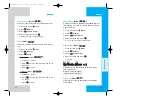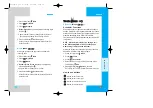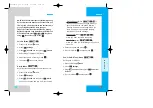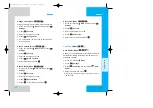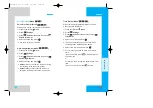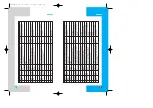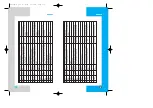
RD6000
89
T
TIIA
A S
Sa
affe
etty
y IIn
nffo
orrm
ma
attiio
on
n
The following is the complete TIA Safety Information for Wireless
Handheld phones.
Exposure to Radio Frequency Signal
Your wireless handheld portable telephone is a low power radio
transmitter and receiver. When it is ON, it receives and also
sends out radio frequency (RF) signals.
In August, 1996, the Federal Communications Commissions
(FCC) adopted RF exposure guidelines with safety levels for
hand-held wireless phones. Those guidelines are consistent
with the safety standards previously set by both U.S. and
international standards bodies:
ANSI C95.1 (1992) *
NCRP Report 86 (1986)
ICNIRP (1996)
Those standards were based on comprehensive and periodic
evaluations of the relevant scientific literature. For example, over
120 scientists, engineers, and physicians from universities,
government health agencies, and industry reviewed the
available body of research to develop the ANSI Standard
(C95.1).
The design of your phone complies with the FCC guidelines
(and those standards).
Antenna Care
Use only the supplied or an approved replacement antenna.
Unauthorized antennas, modifications, or attachments could
damage the phone and may violate FCC regulations.
Phone Operation
NORMAL POSITION: Hold the phone as you would any other
telephone with the antenna pointed up and over your shoulder.
5 Safety Guidelines
S
AFETY
G
UIDELINES
RD6000
88
RD6000
Phone Info
(Menu )
S/W Version (Menu
)
Allows you to view the software, PRL, and BREW
version.
1. Press Left Soft Key
Menu.
2. Press
Settings.
3. Press
Phone Info and then press
S/W
Version.
Icon Glossary (Menu
)
Allows you to view all the icons and their meanings.
1. Press Left Soft Key
Menu.
2. Press
Settings.
3. Press
Phone Info and then press
Icon
Glossary.
Shortcut Help (Menu
)
Allows you to view condensed information about
using the phone.
1. Press Left Soft Key
Menu.
2. Press
Settings.
3. Press
Phone Info and then press
Shortcut Help.
From the Standby screen, press
.
RD6000-E.qxd 6/18/04 9:57 AM Page 88





